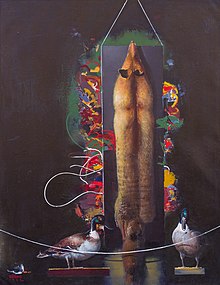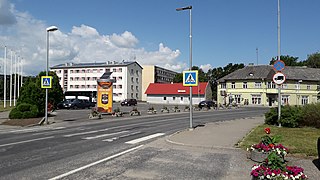
Tapa is a town in Tapa Parish, Lääne-Viru County, Estonia, located at the junction of the country's Tallinn–Narva (west–east) and Tallinn–Tartu–Valga (north–south) railway lines.It is an important centre of transit for freight as well as rail passengers, a home to soldiers since the 1930s. Tapa also plays an important role in training young men and women in the Estonian Defense Forces, being nearby to Keskpolügoon. The Valgejõgi River passes Tapa on its northeastern side.

Kristjan Raud was an Estonian symbolist painter and illustrator who was one of the founders of the Estonian National Museum. Folklore elements figure heavily in his subject matter and his style is reminiscent of Primitivism. His twin brother, Paul, also became a well-known painter.

Estonian Scout Association is the primary national Scouting organization of Estonia, became a member of the World Organization of the Scout Movement in 1996. The coeducational Eesti Skautide Ühing has 1,337 members as of 2011.

During World War II, in the course of Operation Barbarossa, Nazi Germany invaded Estonia in July–December 1941, and occupied the country until 1944. Estonia had gained independence in 1918 from the then warring German and Russian Empires. However, in the wake of the August 1939 Nazi-Soviet Pact, the Stalinist Soviet Union had invaded and occupied Estonia in June 1940, and the country was formally annexed into the USSR in August 1940.

The Estonian Orthodox Church of the Moscow Patriarchate is a semi-autonomous church in the canonical jurisdiction of the Patriarchate of Moscow whose primate is appointed by the Holy Synod of the latter.
This article covers the architecture of Estonia.
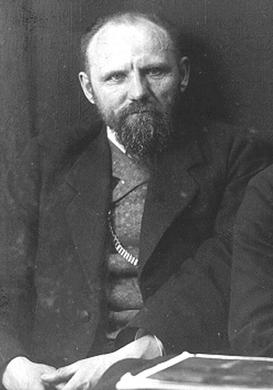
Ants Laikmaa was an Estonian painter.

Leonhard Lapin, also known under the pseudonym Albert Trapeež, was an Estonian architect, artist, architecture historian, and poet.

Lohu is a village in Kohila Parish, Rapla County, in northwestern Estonia. Lohu railway station, on the Tallinn - Viljandi railway line operated by Elron, in a short distance from the village.

Aleksander Jaakson was an Estonian general and educator. After beginnings as a teacher in Türi, he served with the Imperial Russian Army in World War I, and was advanced to Staff Captain. During the disintegration of the Russian Republic in 1917, he returned home to establish a branch of the Estonian Defence League. He was a decorated participant in the Estonian War of Independence and later continued serving in the Estonian Defence Forces in various positions, including military education.

Karl Pärsimägi was an Estonian Fauvist painter. He was murdered in Auschwitz concentration camp after being arrested in Paris.
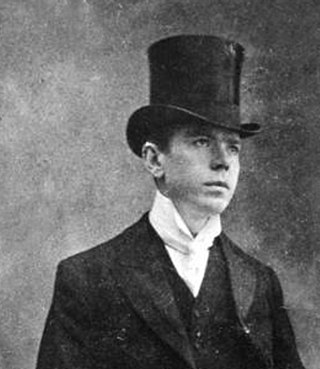
Aleksander Promet was an Estonian painter and graphic artist.
Malle Leis was an Estonian painter and graphic artist. Her works mostly represent abstract forms in nature, including flowers, fruits, and vegetables. She developed a silk screen technique that became her trademark.

Balder Tomasberg was an Estonian artist.
Olav Maran is an Estonian artist.
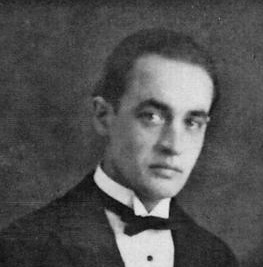
Kuno Veeber was an Estonian painter and graphic artist whose career began in the late 1910s.

Välko Tuul was an Estonian painter.
Aino Bach was an Estonian artist known for her engravings and her portrayals of Soviet-era femininity.
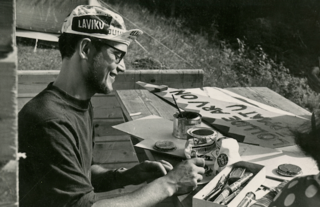
Kaarel Kurismaa is the first and one of the most important sound art and sound installation artists in Estonia. His work also expands into the field of painting, animation, public space monumental art, stage installations. In Estonian art history, Kurismaa’s significance lies mostly in the pioneering work with kinetic art and with keeping its traditions alive. Kurismaa stands as one of Estonian sound art scene’s central icons. His idiosyncratic work serves as a foundation for Estonian sound and kinetic art.
Enno Ootsing is an Estonian artist and academic. He has worked as a freelance graphic artist and designer, book artist and illustrator. In 1980, he became a lecturer at the Estonian Academy of Arts, and from 1984 until 2005, he was a professor and head of the graphics department of the institute. Since 2007 he has been a professor emeritus at the institute.



